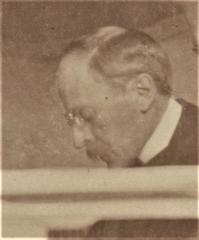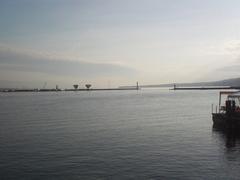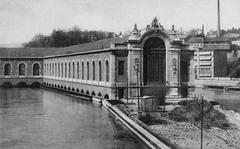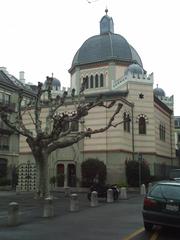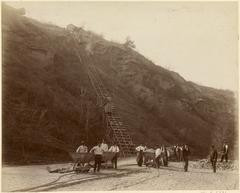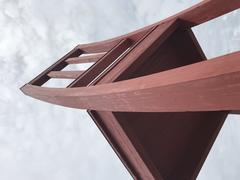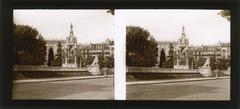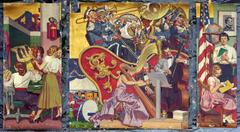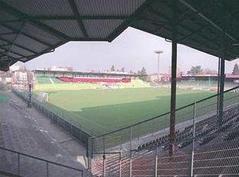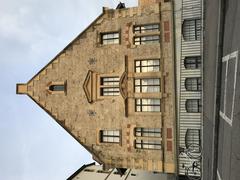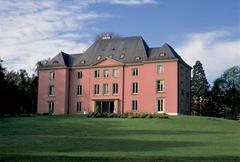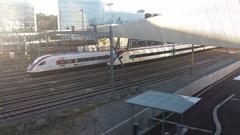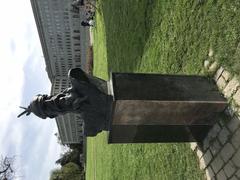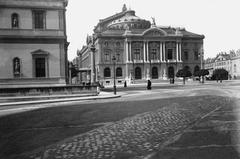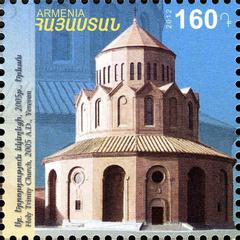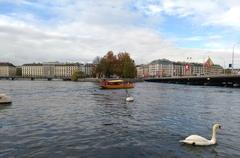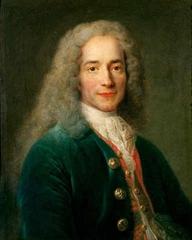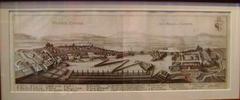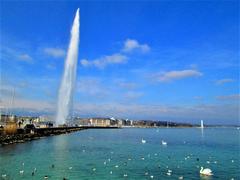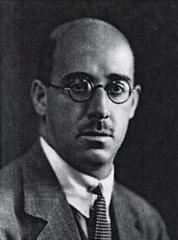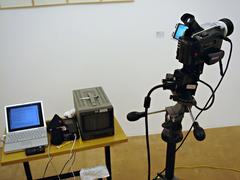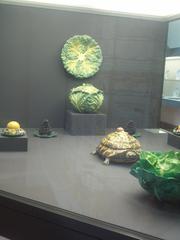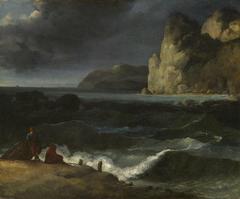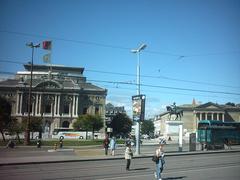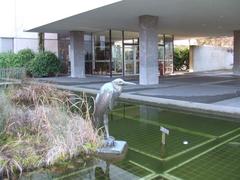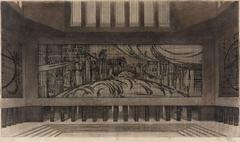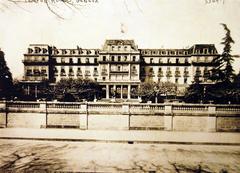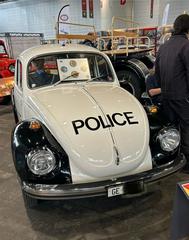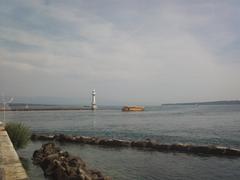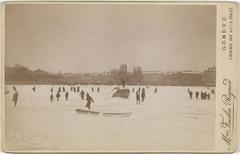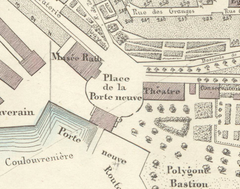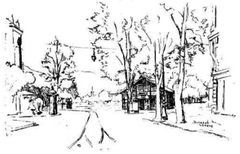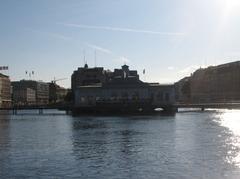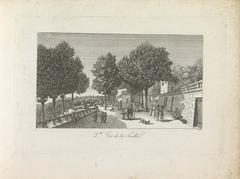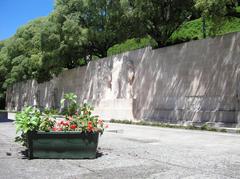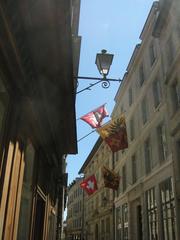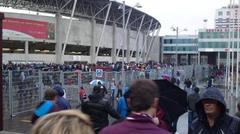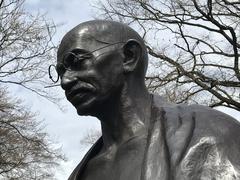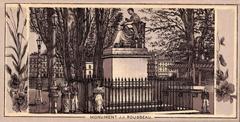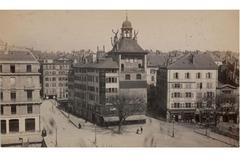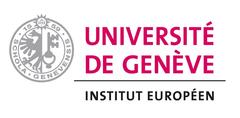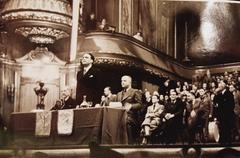Barbier-Mueller Museum Geneva: Visiting Hours, Tickets, and Comprehensive Guide
Date: 15/06/2025
Introduction
Situated in the heart of Geneva’s Old Town, the Barbier-Mueller Museum is internationally renowned for its extraordinary collection of tribal, classical, and ancient art. Established in 1977 and housed within a carefully restored 16th-century building, the museum holds over 7,000 objects spanning Africa, Oceania, Asia, the Americas, and classical antiquity. The museum’s foundation is rooted in the early 20th-century collecting passion of Josef Mueller, whose interest in non-Western traditional arts influenced modern European art. The collection was significantly expanded by Jean Paul Barbier-Mueller, transforming it into one of the world’s most important private art repositories.
The museum is not only a treasure trove of global artistic heritage but also a vibrant center for cross-cultural understanding, research, and education. Visitors can expect thoughtfully curated exhibitions, dynamic temporary shows, accessible facilities—including wheelchair access and guided tours—and a location ideal for exploring Geneva’s historic landmarks such as the Saint-Pierre Cathedral. This guide provides all essential information for planning a visit, including hours, ticketing, accessibility, and practical tips to enrich your experience (Sotheby’s; History Hit; Barbier-Mueller Official Website).
Table of Contents
- Overview of the Barbier-Mueller Museum
- History and Legacy
- Visitor Information
- Museum Collections and Exhibitions
- Museum Layout and Facilities
- Visitor Tips and Amenities
- Educational and Research Resources
- Frequently Asked Questions (FAQ)
- Plan Your Visit: Summary and Tips
- Official Sources and Further Reading
Overview of the Barbier-Mueller Museum
The Barbier-Mueller Museum offers an immersive experience into the world’s diverse artistic traditions. Its collections provide a deep insight into the spiritual, social, and aesthetic roles of artifacts from Africa, Oceania, Asia, and the Americas. The museum is a pivotal site for both art enthusiasts and travelers interested in Geneva’s historical and cultural heritage.
History and Legacy
Early Origins
The Barbier-Mueller collection began with Josef Mueller’s fascination with tribal and classical art in 1907. Initially inspired by the influence of African art on European modernism, Mueller’s collecting philosophy prioritized the cultural and historical contexts of each object (Sotheby’s).
The Barbier-Mueller Family
Jean Paul Barbier-Mueller, Mueller’s son-in-law, significantly expanded the collection, making it accessible to a global audience through international exhibitions, loans, and publications. Today, the collection is recognized as one of the most significant private assemblies of non-Western art (History Hit).
Museum Founding and Setting
Founded in 1977, the museum is located in a 16th-century building near the Saint-Pierre Cathedral, offering visitors a tranquil and historic setting that enhances the experience of exploring global art (Sotheby’s).
International Significance
The Barbier-Mueller Museum is acclaimed for its scholarly research, dynamic exhibitions, and pioneering role in promoting the appreciation of non-Western arts. It regularly collaborates with international institutions for traveling exhibitions and academic initiatives (Sotheby’s; History Hit).
Visitor Information
Visiting Hours
- Tuesday to Sunday: 11:00 AM – 6:00 PM
- Thursdays: Extended hours until 8:00 PM
- Closed: Mondays and public holidays
Tickets and Booking
- Adults: CHF 12
- Students and Seniors: CHF 8
- Children under 16: Free
- Booking: Tickets can be purchased online via the official website or on-site.
- Advance Booking: Recommended during peak times and temporary exhibitions.
Accessibility
- The museum is wheelchair accessible with elevators and ramps.
- Visitors with mobility needs are encouraged to contact the museum in advance for personalized assistance.
- Accessible restrooms are provided.
Guided Tours and Events
- Guided Tours: Available in multiple languages by appointment and on weekends.
- Special Events: The museum hosts lectures, workshops, and temporary exhibitions. Check the website for updates.
Photography Policy
- Non-flash photography is permitted in most galleries.
- No tripods or professional equipment without prior approval.
- Some temporary exhibitions may restrict photography—check with staff.
Directions and Nearby Attractions
- Address: Rue Jean-Calvin 10, 1204 Geneva, Switzerland
- Transport: Accessible by tram lines 12 and 18 (stop “Bel-Air”) and a 10-minute walk from Geneva’s main train station.
- Parking: Public garages available nearby at Place du Molard.
- Nearby: St. Pierre Cathedral, Maison Tavel, International Museum of the Reformation, Parc des Bastions, and numerous Old Town cafes and shops.
Museum Collections and Exhibitions
Origins and Development
The museum’s collection began with Josef Mueller and was later expanded by the Barbier-Mueller family. It has become one of the world’s most important private collections of tribal, classical, and ancient art (History Hit).
Permanent Collections
Africa
- Over 3,000 objects, including masks, sculptures, ceremonial items, and jewelry from cultures such as the Dogon, Fang, and Yoruba.
- Artifacts date from the 12th to early 20th centuries.
- Displays emphasize the social, spiritual, and aesthetic significance of each piece.
Oceania
- Features ceremonial masks, carved figures, and ritual objects from Melanesia, Polynesia, and Micronesia.
- Explores the role of art in community identity and ritual.
Asia
- Objects from Southeast Asia, East Asia, and the Indian subcontinent, including Buddhist sculptures, textiles, and ceremonial artifacts.
- Thematic displays highlight the intersection of religion, power, and artistic expression.
Pre-Columbian Americas
- Includes Olmec stone heads, Moche goldwork, and Chavín stone sculptures.
- Artifacts are contextualized within the broader cultural history of the Americas (historytools.org).
Temporary Exhibitions
- The museum hosts two major thematic exhibitions annually, often in partnership with contemporary artists.
- Notable exhibitions include “Échos” (with Jean-Baptiste Huynh), “Transparents” (curated by John Armleder), and “Scarifications” (in collaboration with Miquel Barceló) (Almine Rech).
- These shows foster cross-cultural dialogue and innovation.
Museum Layout and Facilities
- Building: 16th-century structure with a welcoming interior courtyard and historic charm.
- Gallery Arrangement: Organized by geographic region and theme, with clear bilingual signage.
- Amenities: Gift shop with exhibition catalogs, art books, and unique gifts. No on-site café, but many options nearby.
Visitor Tips and Amenities
- Recommended Visit Duration: 1–2 hours for a comprehensive experience.
- Children: Free admission for visitors under 16; content is best appreciated by older children and adults.
- Photography: Non-flash photography allowed; verify restrictions for specific exhibitions.
- Virtual Tours: Available through the museum’s website for pre-visit planning.
Educational and Research Resources
- Library & Archive: Over 30,000 volumes and 100,000 photographs for research and education.
- Publications: The museum has produced over 100 books and catalogs.
- Academic Collaborations: Partners with institutions worldwide for research and traveling exhibitions.
Frequently Asked Questions (FAQ)
Q: What are the opening hours?
A: Tuesday–Sunday, 11:00 AM–6:00 PM; Thursdays until 8:00 PM; closed on Mondays.
Q: How do I buy tickets?
A: Purchase online via the official website or at the entrance.
Q: Is the museum wheelchair accessible?
A: Yes, but some historic features may present challenges—contact the museum for specific needs.
Q: Are guided tours available?
A: Yes, by appointment and on weekends.
Q: Is photography permitted?
A: Non-flash photography is generally allowed; confirm for specific exhibitions.
Q: Are children allowed?
A: Yes, and children under 16 enter free.
Q: Are there special exhibitions?
A: Yes; check the official website for current shows.
Plan Your Visit: Summary and Tips
- Check the official website for the latest hours, exhibitions, and ticketing information.
- Download the Audiala app for interactive audio guides.
- Follow the museum on social media for updates and behind-the-scenes content.
- Combine your visit with nearby Geneva historical sites for a full cultural experience.
Official Sources and Further Reading
- Barbier-Mueller Museum in Geneva: Visiting Hours, Tickets & Historical Insights (Sotheby’s)
- Barbier-Mueller Museum in Geneva: Visiting Hours, Tickets, Collection Highlights & Visitor Guide (History Hit)
- Your Complete Barbier-Mueller Museum Guide: Visiting Hours, Tickets, Exhibitions & More (Barbier-Mueller Official Website)
- Barbier-Mueller Museum Geneva: Visiting Hours, Tickets & Cultural Highlights (My Art Guides)
Experience the Barbier-Mueller Museum—a landmark of artistic discovery and cultural dialogue in Geneva’s historic Old Town.

